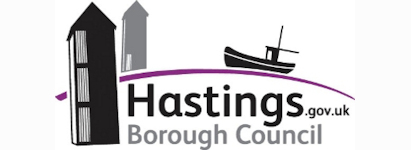Domestic Homicide Reviews
What is a Domestic Homicide Review and how do they work?
An agency (most commonly Sussex Police) can report any deaths due to, or suspected to have been caused by, domestic abuse to the East Sussex Safer Communities Partnership. The Partnership reviews the case and decides whether to have a review, and if so, is responsible for conducting that review.
A review aims to learn how local agencies can improve how they work together and what needs to change to reduce the risk of another death. More information and guidance from 2016 is available on the Home Office website.
The purpose of a Domestic Homicide Review:
- Identify lessons in how local agencies work individually and together to safeguard victims.
- Identify the expected results of these lessons and timescales for change.
- Improve service responses for all victims and their children through improved agency working.
- Help services prevent domestic abuse
What information is available on local reviews?
The East Sussex Safer Communities Partnership publishes the final summary and report when a review is complete.
Review into the death of Marie
Published June 2024
Summary: the death of a woman in her late 20s, known as ‘Marie,' for the review. The perpetrator received a sentence of life imprisonment for her murder.
Issues identified:
- Marie experienced coercive control as well as physical violence. Marie experienced emotional abuse, humiliation, and intimidation.
- The perpetrator used Marie’s mental health to control and manipulate her. He told her that he would have their child removed from her care if she reported the abuse.
- This case demonstrated several examples of stages of the Domestic Homicide Timeline:
- the perpetrator's history of domestic abuse (stage 1)
- the relationship moving quickly (stage 2)
- a relationship dominated by coercive control (stage 3)
- the trigger of separation (stage 4) before finally,
- the homicide (stage 8).
- Marie’s family noted that they were not aware of specialist domestic abuse services.
Lessons learned:
- Health agencies are often the only service that a victim is engaging with. They have an important role in encouraging disclosures of domestic abuse.
- Agencies need to review their “Did Not Attend policies” to support engagement.
- The importance of understanding the risk during and shortly after separation.
Actions we are taking:
- Completing awareness-raising briefings of the Domestic Homicide Timeline for professionals.
- Raising awareness of different types of domestic abuse and the specialist services available.
- Asking all agencies to review their "Did Not Attend" policies.
Review into the death of Annette
Published June 2024
Summary: the death of a woman in her late 30s, known as ‘Annette,' for the review. The perpetrator received a 22 year prison sentence for murder.
Issues identified:
- Annette was a vulnerable woman with complex health needs. Annette received support from social services and housing authorities. The perpetrator took advantage of this.
- Services were not aware of the perpetrator, his needs or the level of risk he posed.
- Annette was a victim of "cuckooing." This is when "criminals or gangs take over a local property, normally belonging to a vulnerable person, and use it to operate their criminal activity from" (National Crime Agency)
Lessons learned:
- The importance of holistic multi-agency working and information-sharing in safeguarding vulnerable people.
- The importance of appropriate language in recording and assessments.
- The need to raise awareness of "cuckooing" across all agencies and safeguarding teams.
Actions we are taking:
- Increased information sharing links between GP practices and safeguarding mechanisms.
- Linked in with learning from other reviews across Sussex to ensure use of more trauma-informed language.
- Incorporated "cuckooing" into multi-agency safeguarding training.
At the family's request, the East Sussex Safer Communities Partnership has only published the Executive Summary for this review.
Review into the death of Deborah
Published April 2024
Summary: the death of a woman in her late 50s, known as ‘Deborah,' for the review. The perpetrator, Deborah's husband, received a 25 year prison sentence for murder.
Issues identified:
-
Professionals, family and friends were not aware of ongoing abuse in the relationship. Some professionals were aware of historic domestic abuse incidents.
-
Deborah and her husband both discussed the impact of Covid-19 on the support the family received before the murder. The review did not identify specific learning.
-
The perpetrator had a history of mental health deterioration and alcohol misuse
Lessons learned:
-
The importance of appropriate language in recording and assessments
-
The need to raise public awareness of carer stress, coercive control and the domestic homicide timeline
-
The importance of multi-agency safeguarding and information-sharing
Actions we are taking:
-
Reviewed agencies' training and policies to ensure a Whole Family Approach
-
Reviewed their policies on responding to threats to family members
-
Completed awareness-raising briefings of the Domestic Homicide Timeline for professionals
Review into the death of Grace
Published April 2024
Summary: death of a woman in her late 50s, known as ‘Grace’ for the review. The perpetrator, Grace's ex-partner, received a 27 year sentence for murder.
Issues identified:
-
Grace's experiences of domestic abuse included violence and economic abuse
-
Grace was from a South American country and had lived in the UK since the 1990s. The review engaged with an organisation supporting Latin American women in the UK to understand Grace's background
-
The perpetrator had a history of substance misuse
Lessons learned:
-
Grace's risk assessment was rated as medium risk and wasn't referred to the Multi-Agency Risk Assessment Conference (MARAC)
-
When the perpetrator was released from prison for assaulting Grace, the police and domestic abuse services were notified the same day. This did not allow for safety planning with Grace in advance
-
Non-fatal strangulation is a serious risk indicator for future homicide
Actions we are taking:
-
Promoting "professional judgement" as a MARAC referral criteria when cases are rated as medium risk
-
Reviewing policies to manage the safe release of domestic abuse perpetrators from prison
-
Raising awareness of non-fatal strangulation
Review into the death of Adult K
Approved for publication in January 2024
Summary: death of a woman in her early 50s. The perpetrator, her adult son, was found guilty of manslaughter with diminished responsibility.
Issues identified:
-
Adult K’s experiences of domestic abuse included coercive control and economic abuse
-
Adult child-to-parent abuse (CPA) is less understood than domestic abuse in intimate relationships
-
The perpetrator experienced problems with mental health, substance misuse and gambling
Lessons learned:
-
The focus was often on Adult K to manage the risk and keep herself safe. The review found that agencies must do more to reinforce measures against perpetrators. This includes continuing to assess risk, particularly when new information comes to light.
-
Professionals need more training on CPA and unconscious bias about familial relationships
-
Professionals need support to understand economic abuse as a type of coercive control
Actions we are taking:
-
Raising awareness of economic abuse as a type of coercive control
-
Raising public awareness about CPA and the support offered by domestic abuse services
-
Supporting professionals with training, guidance and supervision around responding to CPA
Front line staff and managers can read the key learning from the review. These are available in a 1 page or briefing format:
Review into the death of Julie
Approved for publication June 2023
Summary: death of a woman in her late 40s, who was known by the pseudonym ‘Julie’ for the purposes of the review. The perpetrator, Julie's partner, was charged and later convicted of manslaughter with diminished responsibility.
Issues identified:
-
The perpetrator had a history of violence and domestic abuse, mental illness, and substance misuse.
-
Relevant services attempted to engage with the perpetrator, however, risk assessments were insufficient.
-
Julie experienced coercive control and other barriers to supporting prosecutions.
-
Julie was not identified as a carer despite her caring responsibilities, and the perpetrator's history of violent offending had not been shared with her.
Lessons learned:
-
The need to make the most of opportunities to share information with victims.
-
The importance of health agencies having policies and training on routine enquiry on domestic abuse.
-
The need for agencies to share information about domestic abuse and how perpetrators are being managed.
Actions we are taking:
-
Health agencies are reviewing their policies, tools, resources and training to support increased routine enquiry on domestic abuse.
-
Agencies will raise awareness of opportunities to share information with victims, including the Domestic Violence Disclosure Scheme.
-
Strengthening information sharing arrangements between agencies and seeking funding to develop more perpetrator programmes in East Sussex.
Front line staff and managers can read the key learning from the review. These are available in a 1 page or briefing format:
DHR Nicola and Davina
This review was not published due to identifiable circumstances, but learning documents are available below:
Review into the death of Pamela (Adult F)
Approved for publication in November 2017
Summary: murder of a woman in her late 40s, who for the purposes of the review was known by the pseudonym ‘Pamela’. The perpetrator, known by the pseudonym ‘Lance’, was charged and later convicted with her murder. Lance was Pamela's ex-partner. The homicide happened the same month that Pamela and Lance separated.
Issues identified:
-
The recognition of domestic abuse, stalking and harassment.
-
The role of health services.
-
Ensuring that family members have access to information on local support.
-
Ensuring simplified referral pathways to specialist services.
-
Ensuring access to specialist services in health settings.
Lessons learned:
-
Recognising abusive behaviour (particularly coercive control), stalking and harassment.
-
Use of the Domestic Abuse Stalking and Harassment Risk Identification Checklist (DASH RIC).
-
Professional curiosity, in particular in relation to the role of health professionals.
-
Ensuring awareness of the Domestic Violence Disclosure Scheme to find out if someone’s partner has a history of violence or abuse.
Actions we are taking:
-
Awareness raising around coercive control, stalking and the Domestic Violence Disclosure Scheme.
-
Promoting access to health-based specialist services.
-
Developing responses to stalking and harassment.
-
Reviewing referral pathways for victims of domestic abuse incidents and crimes, including access to commissioned specialist services.
Front line staff and managers can read the key learning from the review. These are available in a 1 page or briefing format:
Review into the death of Henrietta (Adult E)
Approved for publication in November 2017
Summary: murder of a woman in her early 20’s, who for the purposes of the review was known by the pseudonym ‘Henrietta’. The perpetrator, known by the pseudonym ‘Peter’, was convicted of her murder. Peter was Henrietta’s ex-partner. The homicide happened three weeks after Henrietta and Peter separated.
Issues identified:
-
Issues in relation to contact with police, housing providers and health services.
-
How professionals identify perpetrator behaviour.
-
Ensuring simplified referral pathways to specialist services.
-
Ensuring access to specialist services in health settings.
-
Ensuring record-keeping and follow up.
-
Policies about informing police when a victim does not engage.
Lessons learned:
-
Taking opportunities to have conversations with domestic abuse victims, to understand any concerns they might have about a former or current partner.
-
The use of Domestic Abuse Stalking and Harassment Risk Identification Checklist (DASH RIC).
-
Professional curiosity, particularly in relation to housing providers and health professionals.
Actions we are taking:
-
Reviewing referral pathways for victims of domestic abuse incidents and crimes, including access to commissioned specialist services.
-
Promoting awareness of responses to those who use violence and abuse and access to community based support.
-
Promoting access to health-based specialist services.
-
Promoting awareness of the support available to professionals, victim/survivors and their families.
-
Promoting domestic abuse best practice standards in the housing sector.
-
Ensuring housing providers are engaged with local safeguarding processes for adults and children.
Front line staff and managers can read the key learning from the review. These are available in a 1 page or briefing format:
Review into the death of Mrs B
Approved for publication in June 2014
Summary: unlawful killing of Mrs B by her husband Mr B, who was found guilty of murder. The panel concluded that there was nothing to indicate that Mr B might kill a partner as he did. There is no evidence that leads to a view that this event might have been predicted.
Issues identified:
-
Neither person was well known to services, and nor were the strains within their relationship.
-
Mr B had sought psychological support in the past and in the months before this act for his low mood due to bereavements he had suffered. He was identified as having moderately severe depression.
-
Mr B was offered a psychological intervention, but this was not completed as it appears he did not see the appointment letter. When he had discussed it with his GP, he expressed some concern about accessing the service.
Lessons learned:
-
Lessons are limited because the couple's engagement with statutory services was itself limited. There was no contact with specific domestic abuse agencies.
-
However, there were some specific issues including record keeping and available information on psychological interventions.
-
Ensuring that clear, accessible information is available to victim/survivors.
-
Ensuring clear referral pathways to make sure that support is available, from health in particular.
-
The importance of wider societal awareness and understanding of domestic abuse.
Actions we are taking:
-
Ensuring practice around recording is fit for purpose.
-
Developing a referral pathway for victims of a domestic abuse incident.
-
Ensuring information available to domestic abuse victims at or following an incident is fit for purpose.
-
Ensuring a consistent DHR process across Sussex, in both the commission and dissemination of reviews.
-
Developing a consistent response to victims of domestic abuse in primary care settings.
-
Ensuring information on psychological interventions is fit for purpose.
-
Developing a consistent response to victims of emergency care.
-
Ensuring that businesses are better informed and supported in relation to domestic abuse.
-
Ensuring that communities are better informed about domestic abuse
Further information:
For further information contact Eleanor Marsh, Project Manager for Domestic Abuse, East Sussex County Council














